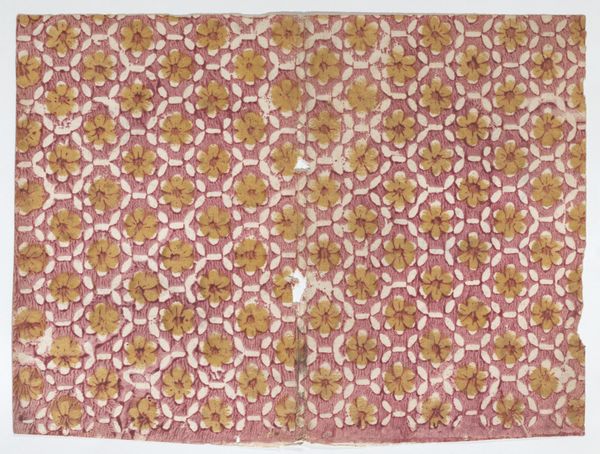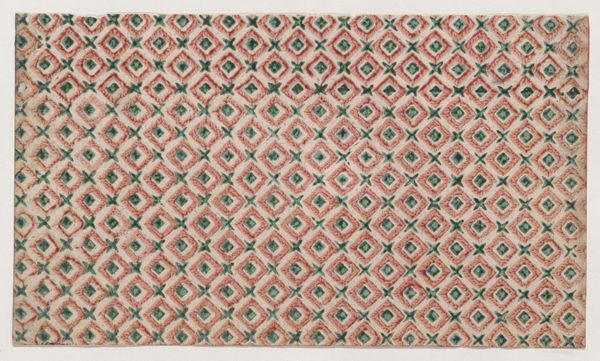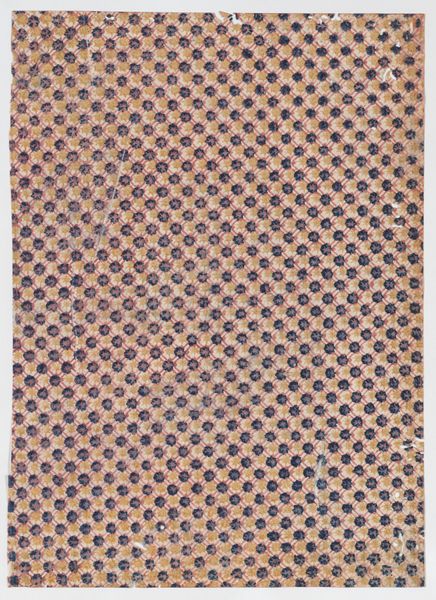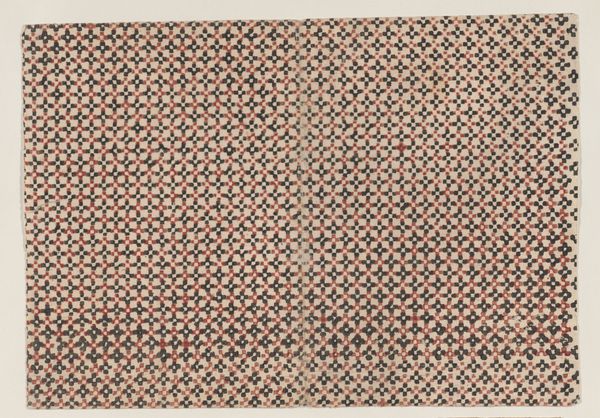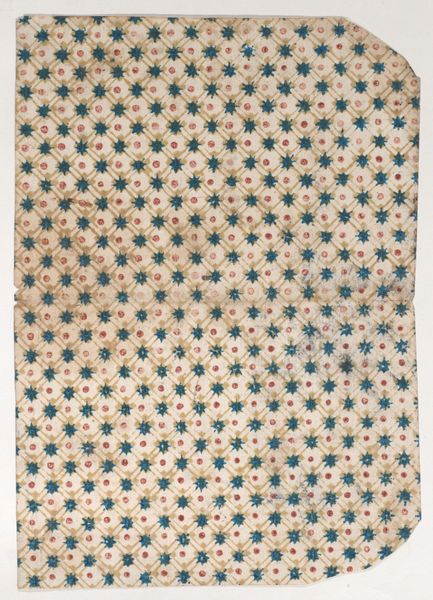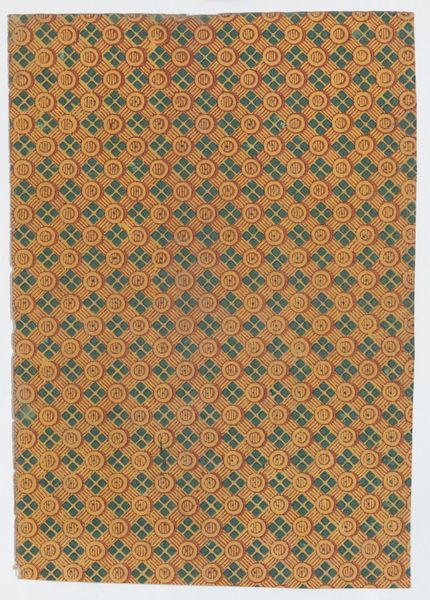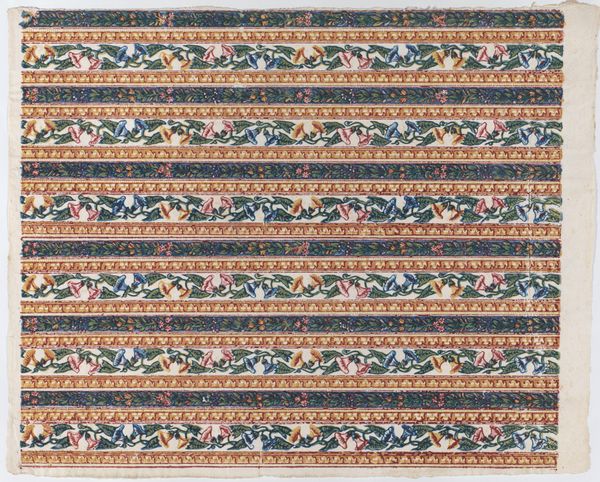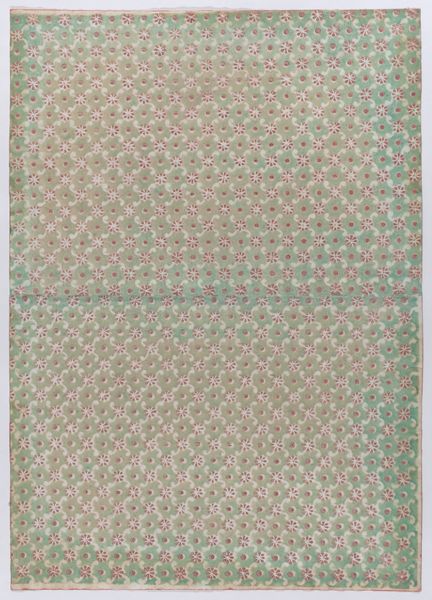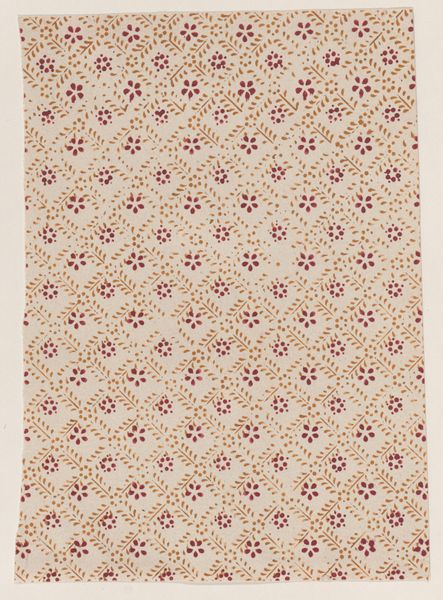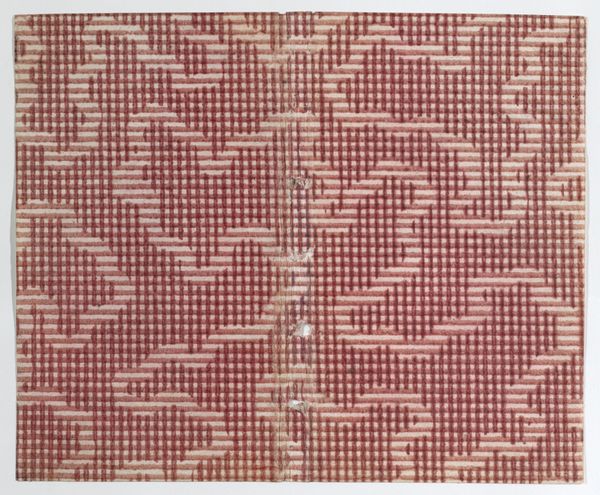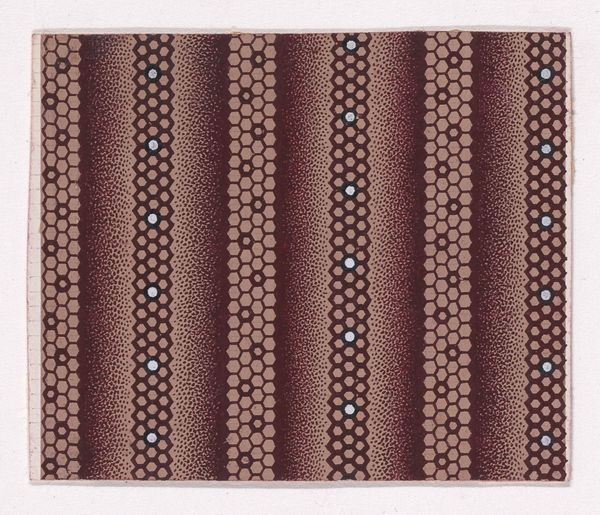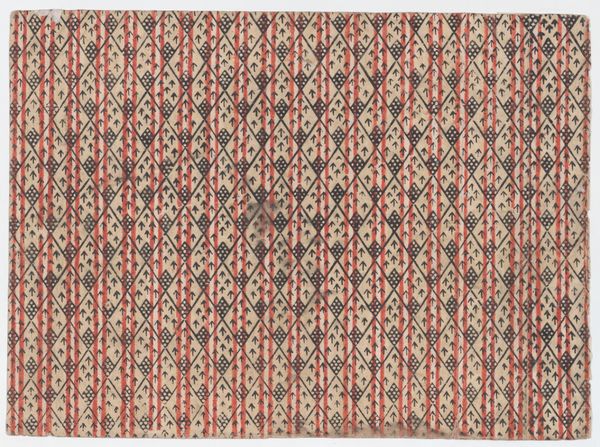
Book cover with geometric and floral pattern in red, yellow, and green 1800 - 1900
0:00
0:00
#
geometric pattern
#
geometric
#
pattern repetition
#
decorative-art
Dimensions: Sheet: 8 7/16 × 11 11/16 in. (21.5 × 29.7 cm)
Copyright: Public Domain
Editor: Here we have an intriguing book cover, an anonymous work likely from the 19th century. It uses print and drawing techniques to create this tight geometric and floral pattern in red, yellow, and green. The whole thing seems so carefully constructed, almost like fabric. What strikes you about it? Curator: For me, the interest lies in the accessibility of the piece. As a book cover, its function immediately suggests mass production and dissemination, particularly given that it employs printmaking. We need to consider how this object acted within a larger network of material exchange, making knowledge and aesthetics available to a wider audience. Editor: So, it's less about artistic genius and more about... availability? Curator: Precisely! Consider the materials used – paper, ink – these were becoming increasingly affordable and widespread during this period. How did that shift in the means of production influence design? This cover represents a democratization of art, a move away from unique, handcrafted objects for the elite. It speaks to the growing culture of print and the increased demand for accessible, attractive, and utilitarian items. The very existence of "decorative art" speaks volumes! Editor: That’s interesting. It completely changes how I look at it. I was seeing it as this nice, quaint little design. Curator: Ask yourself about the labor involved. How many steps were there to creating a pattern that is then re-printed, cut, and bound? What does that tell us about this historical time? It might be a "nice, quaint little design" now, but originally, it would've carried powerful associations with broader societal and technological changes. Editor: I never thought of it that way, but it makes a lot of sense. The repetition suddenly feels less artistic and more like a process. Curator: Exactly. By focusing on the materials, processes, and social context, we can see how this simple book cover reflects a period of massive material and cultural change. Editor: Okay, I’ll definitely keep that in mind for future art observations. Thanks for opening my eyes!
Comments
No comments
Be the first to comment and join the conversation on the ultimate creative platform.
